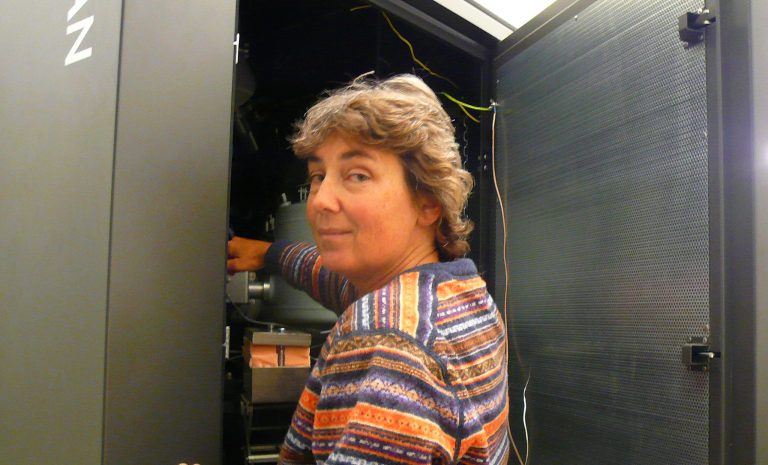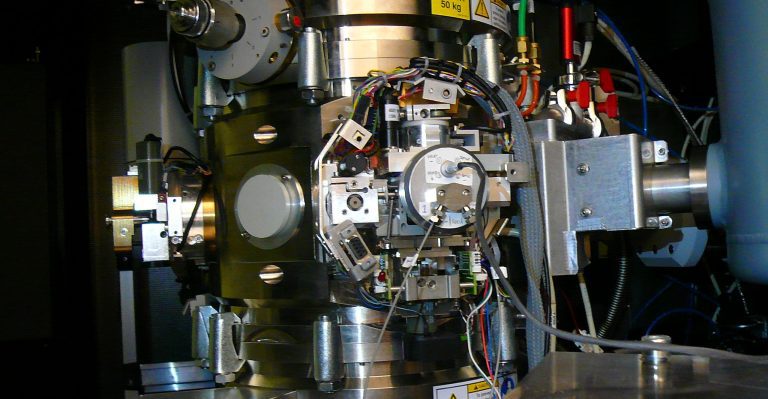It was a world’s first to see platinum particles act as a catalyst: they pulse and swing like a heartbeat. But then they stop.
Many cars have catalysts in their exhausts that do the same process: converting carbon monoxide (CO) and oxygen into carbon dioxide (CO2). The process needs high temperatures (400-500 Celsius) and platinum particles to get going. Platinum acts as a catalyst: it enables the conversion, but it remains chemically unchanged. The question remains: what does platinum do to facilitate the process?
Dr. Indra Puspitasari studied the catalytic conversion in an electron microscope at the Antoni van Leeuwenhoek laboratory in Delft. The challenges for installing a microscopic reactor in the vacuum of the electron microscope are varied and numerous. Still, Puspitasari succeeded to film and photograph the process. Her results were published in Nature last summer.
The footage shows a 30-nanometre platinum particle of about 150 atoms across oscillate during the process. “We see lots of atoms moving over considerable distances,” said Professor Patricia Kooyman, one of Puspitasari’s PhD supervisors. The oscillation can vary between a few times per second or per minute.
The oscillation is a spontaneous effect and very desirable as well. During oscillation, the CO->CO2 conversion rate is 100%, and without oscillation, it’s about 75%. But no one knows how to control it.
“In the microreactor, oscillation may start when we increase the temperature by one degree or less,” said Kooyman. “It may go on for five or even thirty minutes, but then it stops.” How to control the process on a macroscopic level is an even greater challenge.
Fascinating as the findings may be, there is little chance of further research. The Smart Mix research programme has reached its end, and Professor Kooyman has accepted a post in South Africa with the University of Cape Town. Over there, people are more interested in improving the Fischer-Tropsch process that they use to convert coal or biomass into fuels.
• Indra Puspitasari, Towards High Resolution Operando Electron Microscopy of a Working Catalyst, PhD supervisors Prof. Freek Kapteijn (Chemtech, TNW) and Prof. Patricia Kooyman (University of Cape Town), October 10, 2016.






Comments are closed.